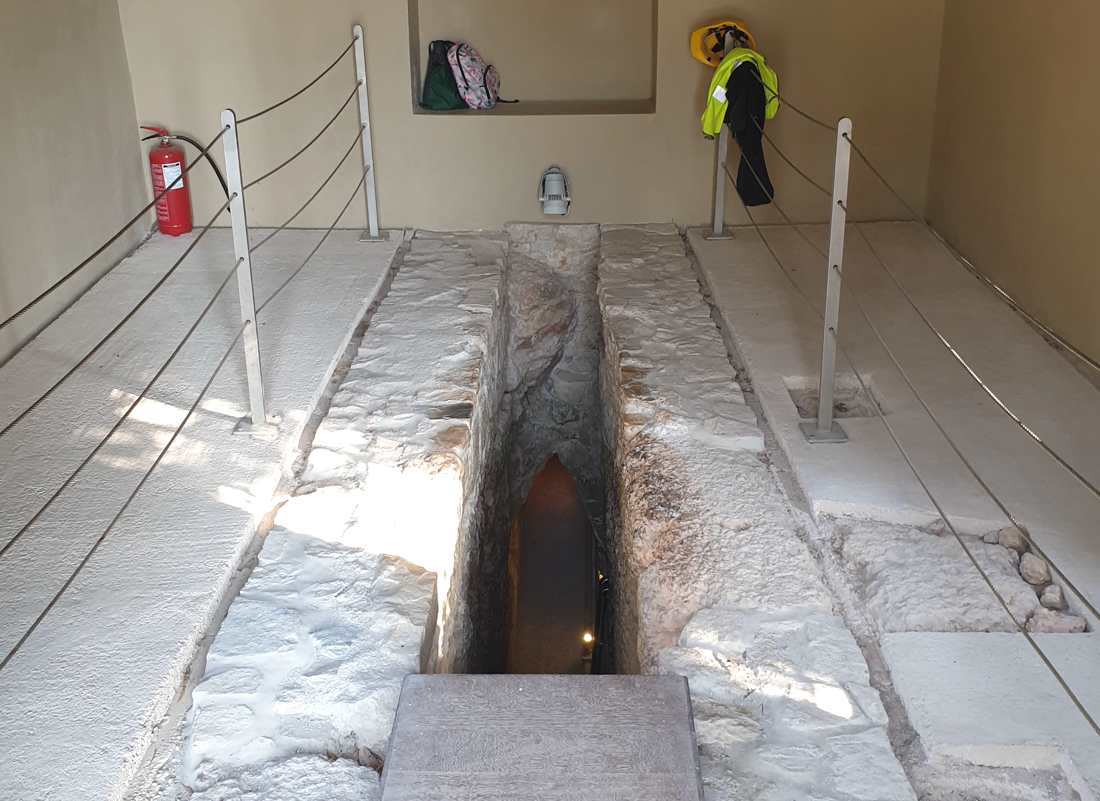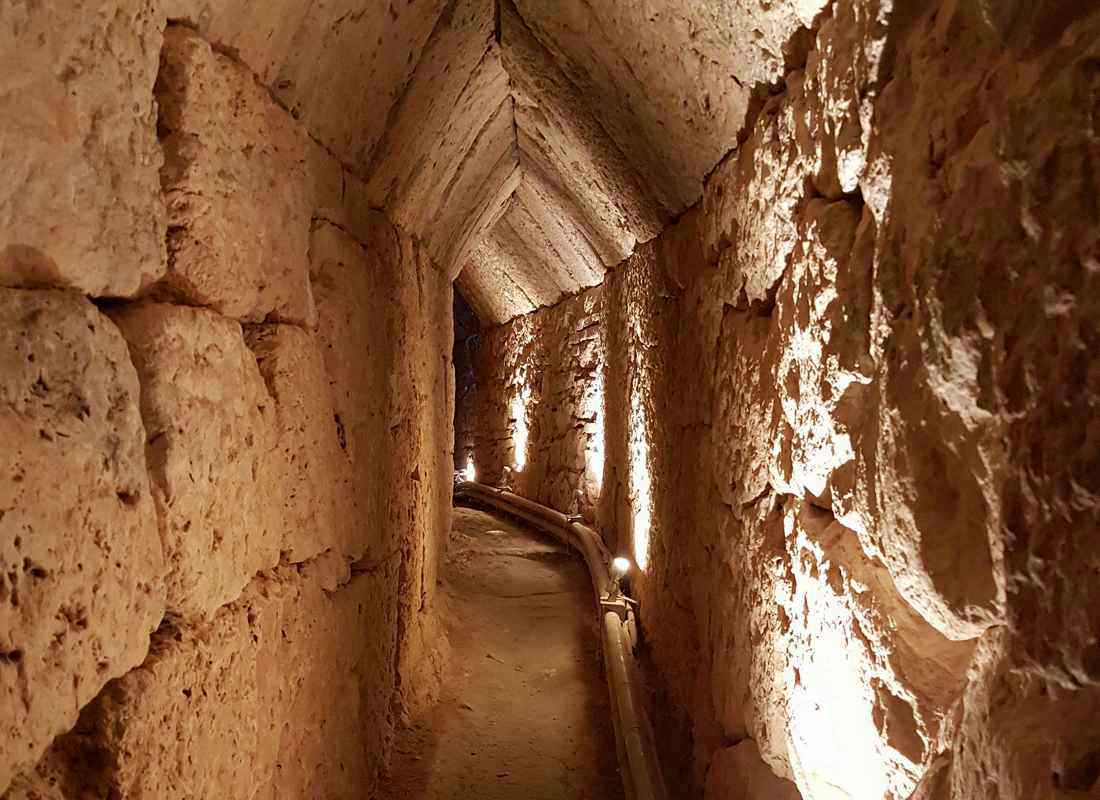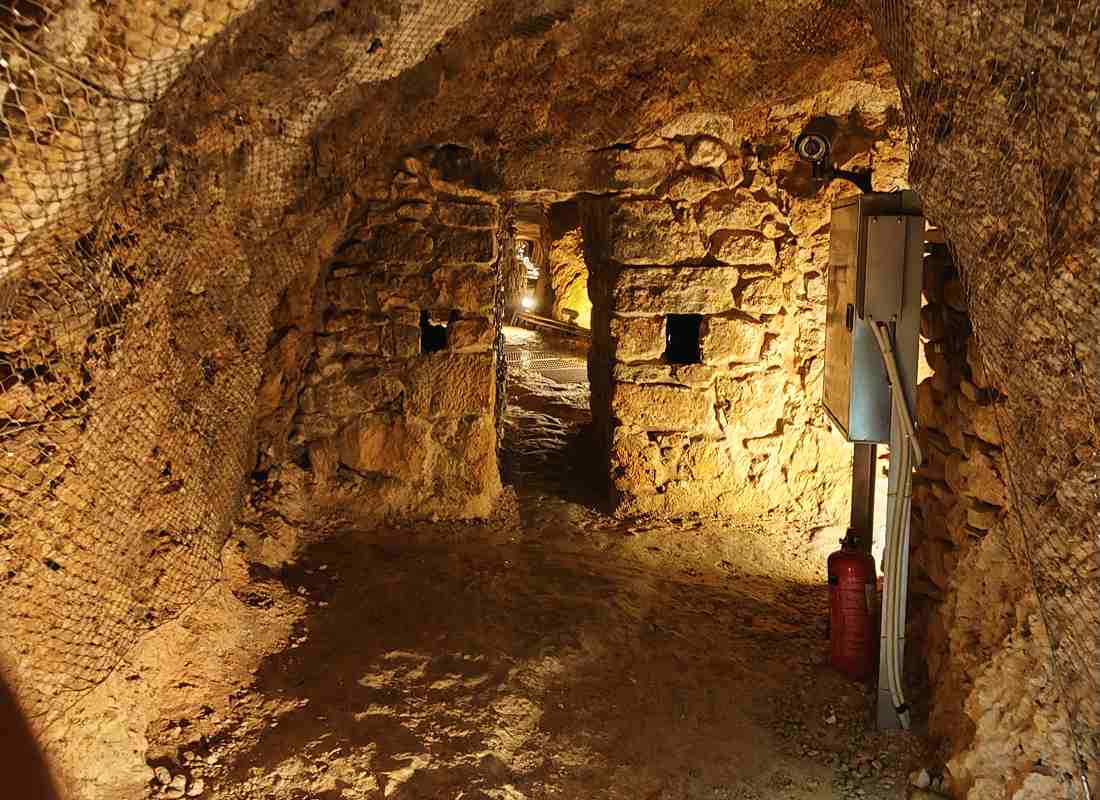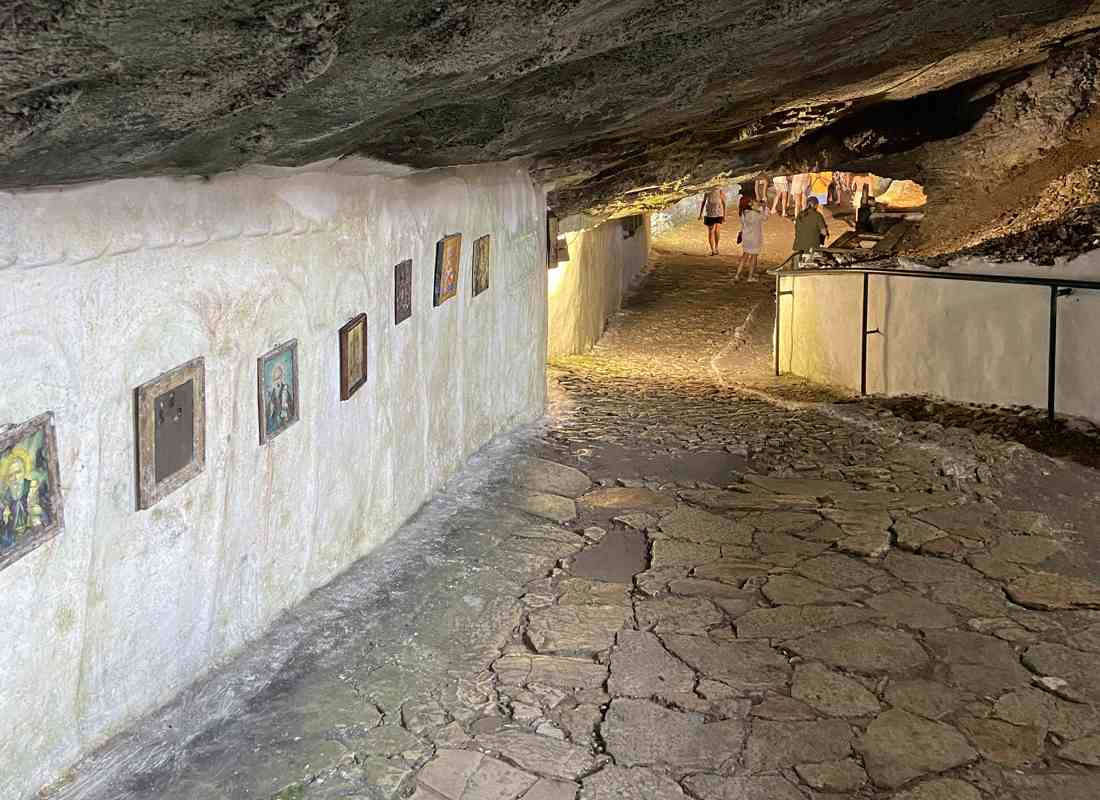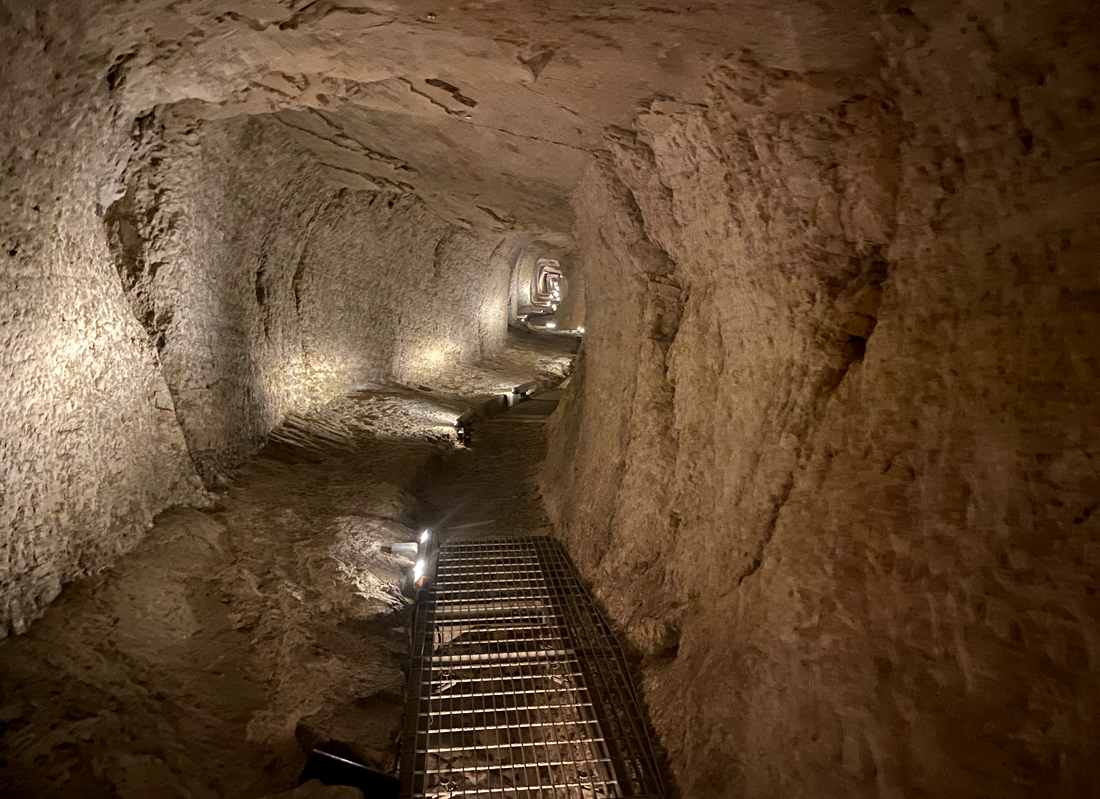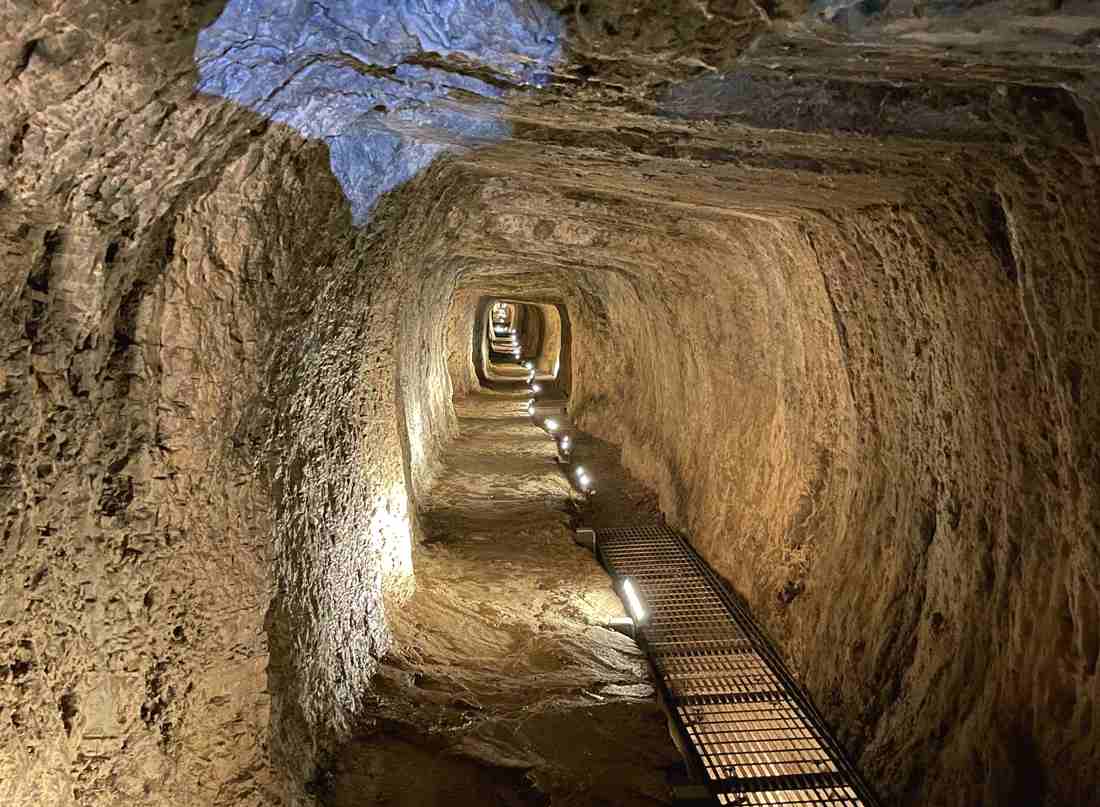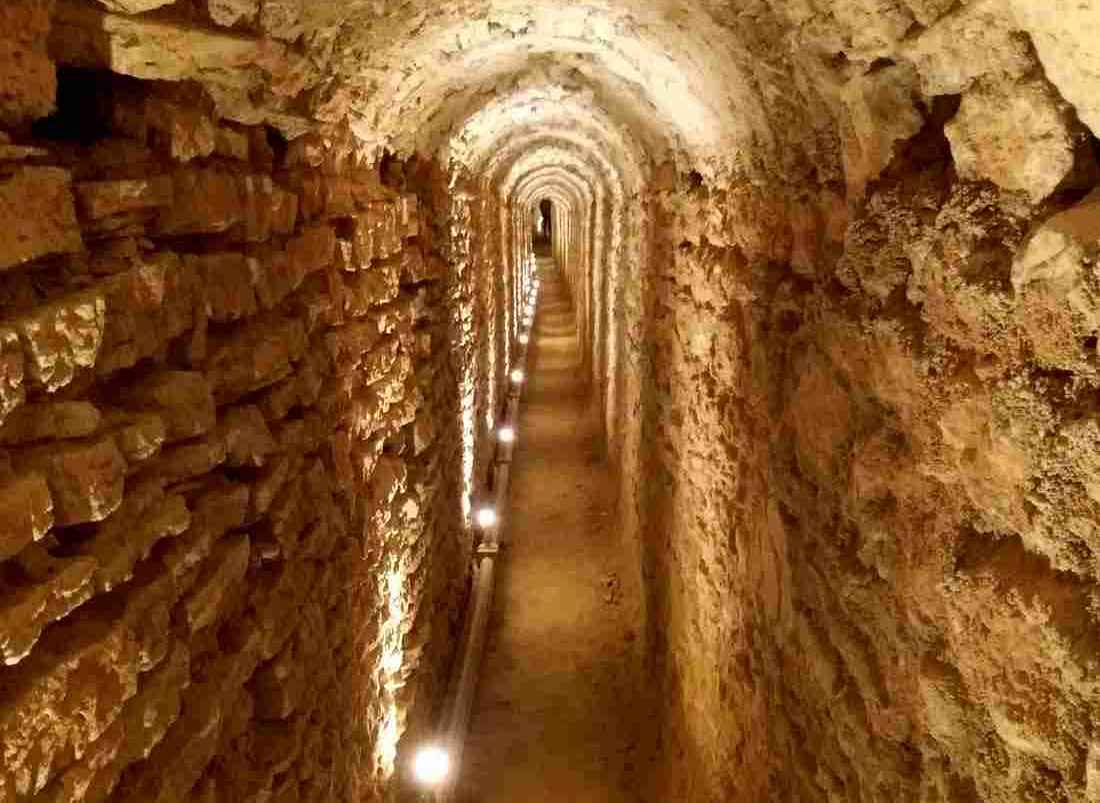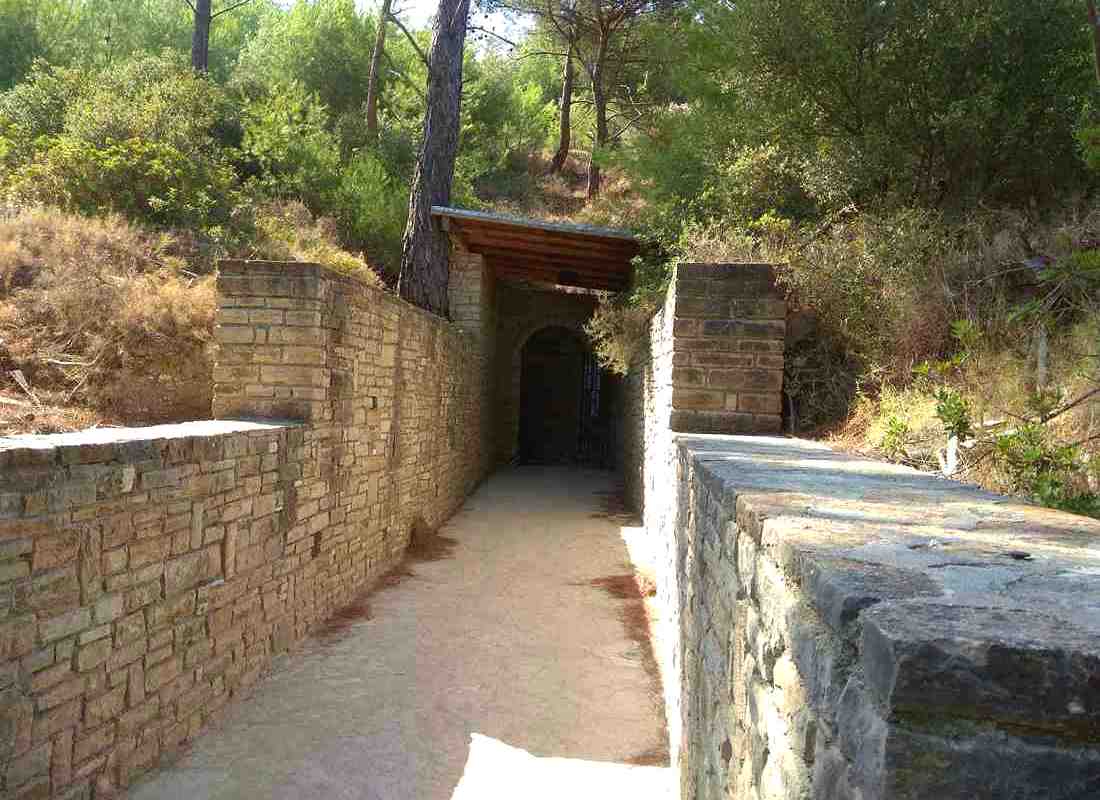
Tunnel of Eupalinos
The Eupaline Tunnel or Samos Aqueduct is an underground aqueduct just over a kilometer long, built on the island of Samos in the 6th century bc. The aqueduct was built by the ancient Greek engineer Eupalinus of Megara on the orders of Polycrates. During the reign of Polycrates, the island of Samos became a center of maritime piracy. Fearing an attack on the island and a siege of the main city, the tyrant of Samos ordered a secret aqueduct to be built under a mountain to supply the city with fresh water from a distant source. The tunnel was designed as two shafts connected by a special adit. In the lower small shaft, a chute carried water from the spring to the city. The upper shaft was intended for the passage of maintenance personnel. The upper shaft was intended for the passage of service personnel. Part of the tunnel was laid with narrower shafts and has a roof made of stone slabs to prevent collapse. The ancient tunnel was laid by counter tunneling on both sides at the same time. But nowadays modern computer technology is used to connect the two parts of the tunnel at one point without errors. Eupalin, on the other hand, used only well-known geometry principles when designing the Samosky tunnel, moreover, the construction was carried out several centuries before these principles were formulated by Euclid. And when laying the tunnel Eupalin applied a method that allowed to compensate for errors at some distance from the theoretical meeting point of the two parts of the tunnel, the direction of the tunnels were changed to a small angle in opposite directions. The two tunnels would intersect, even if they originally ran in different directions and parallel to each other. The problem of possible vertical deflection was solved in a similar way. The connection of the two parts of the tunnel was achieved by increasing the height of both parts. In the first tunnel the floor remained flat but the ceiling was raised, and in the second tunnel the ceiling remained at the same level, but the floor was lowered. Modern scientists examining the tunnel find clear signs of high-level engineering planning and note the quality of the excavation work. It is not surprising that such a colossal structure, built before our era, was called the wonder of the world by contemporaries.



